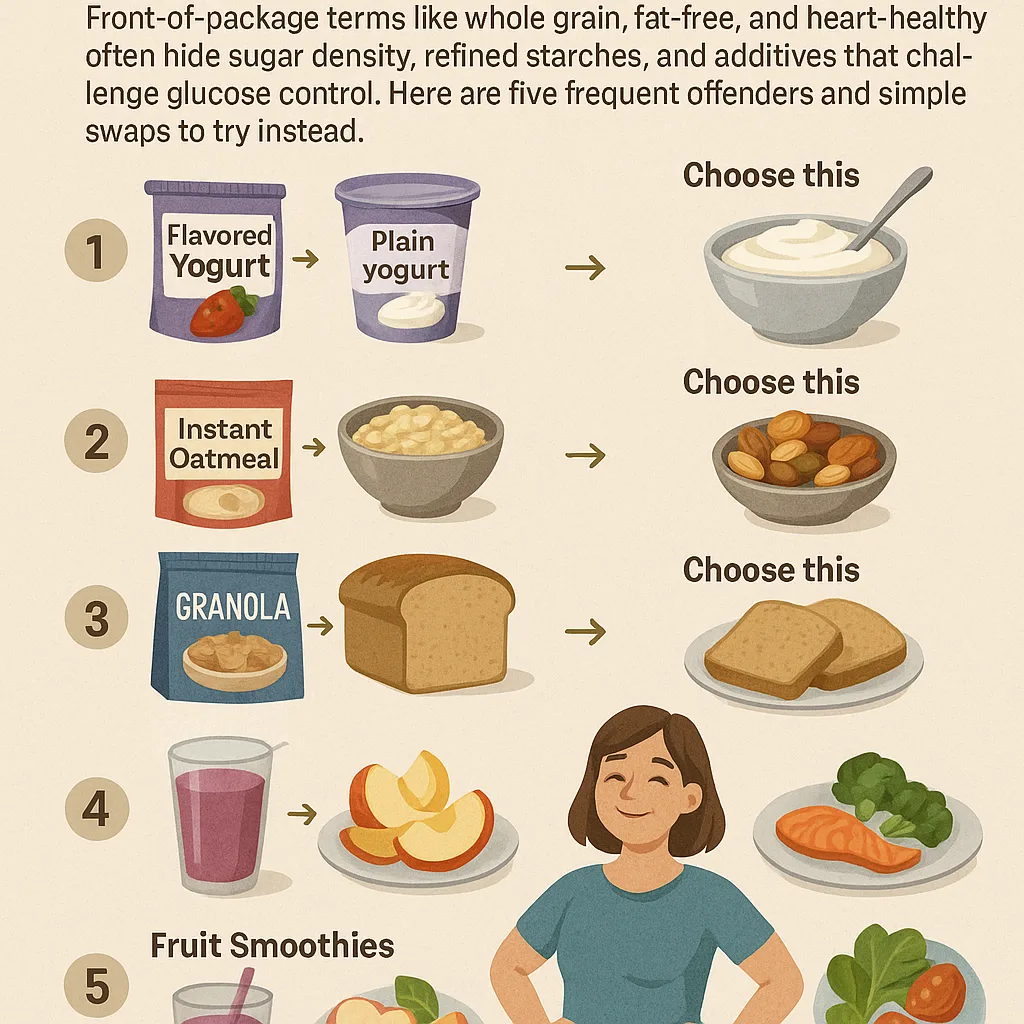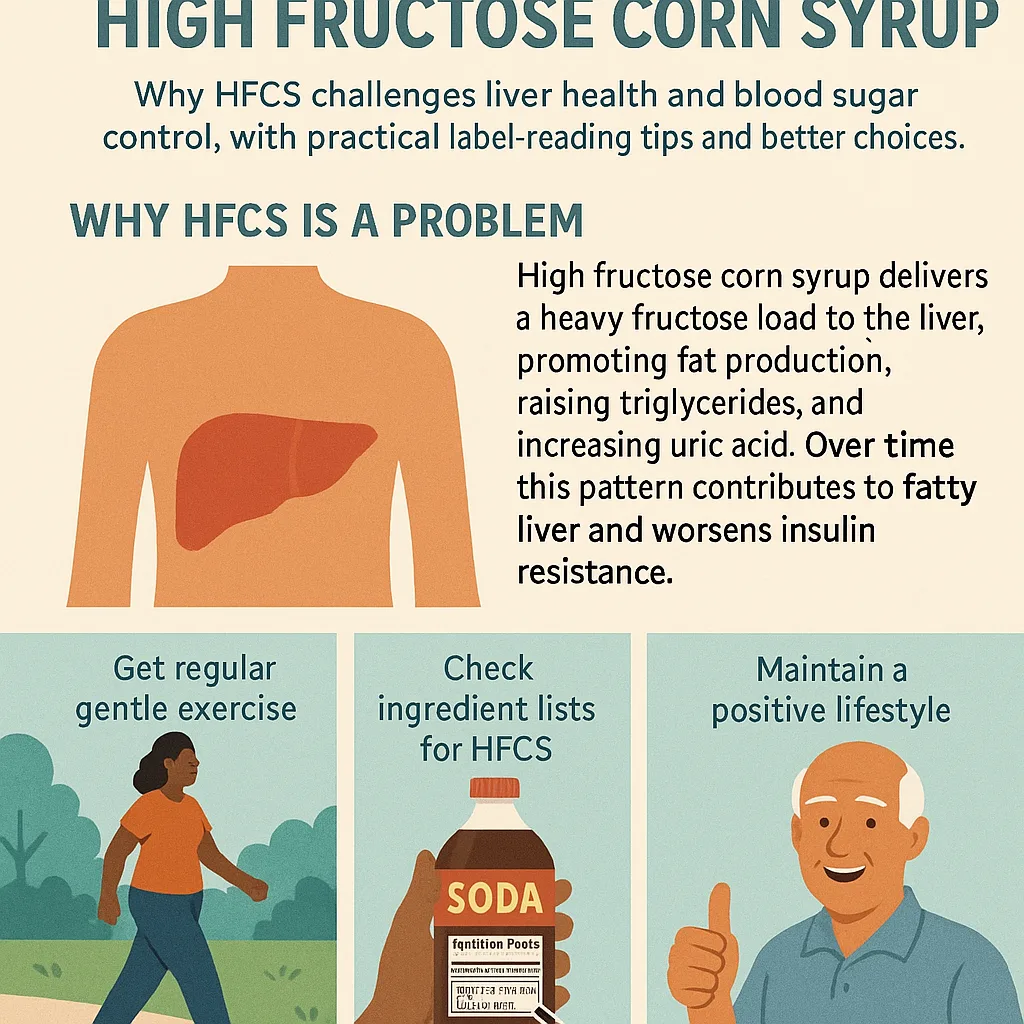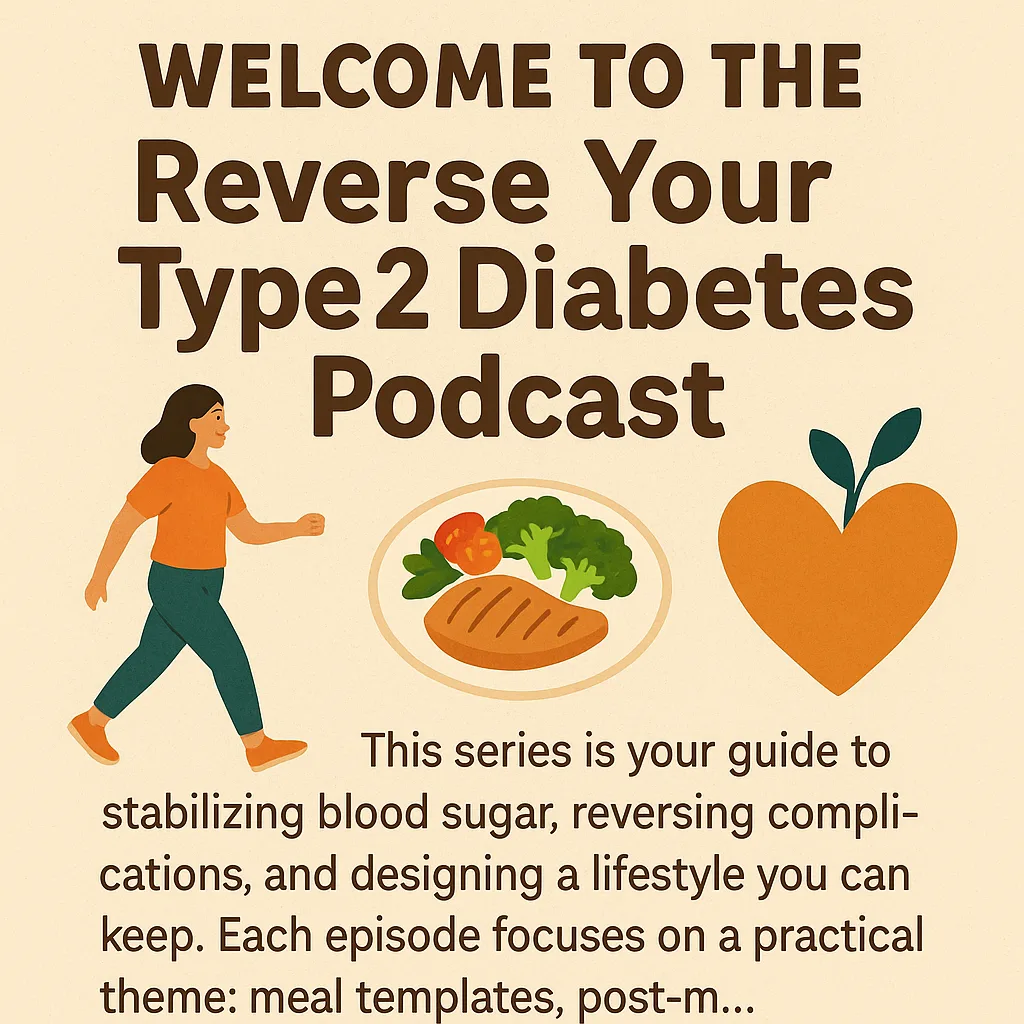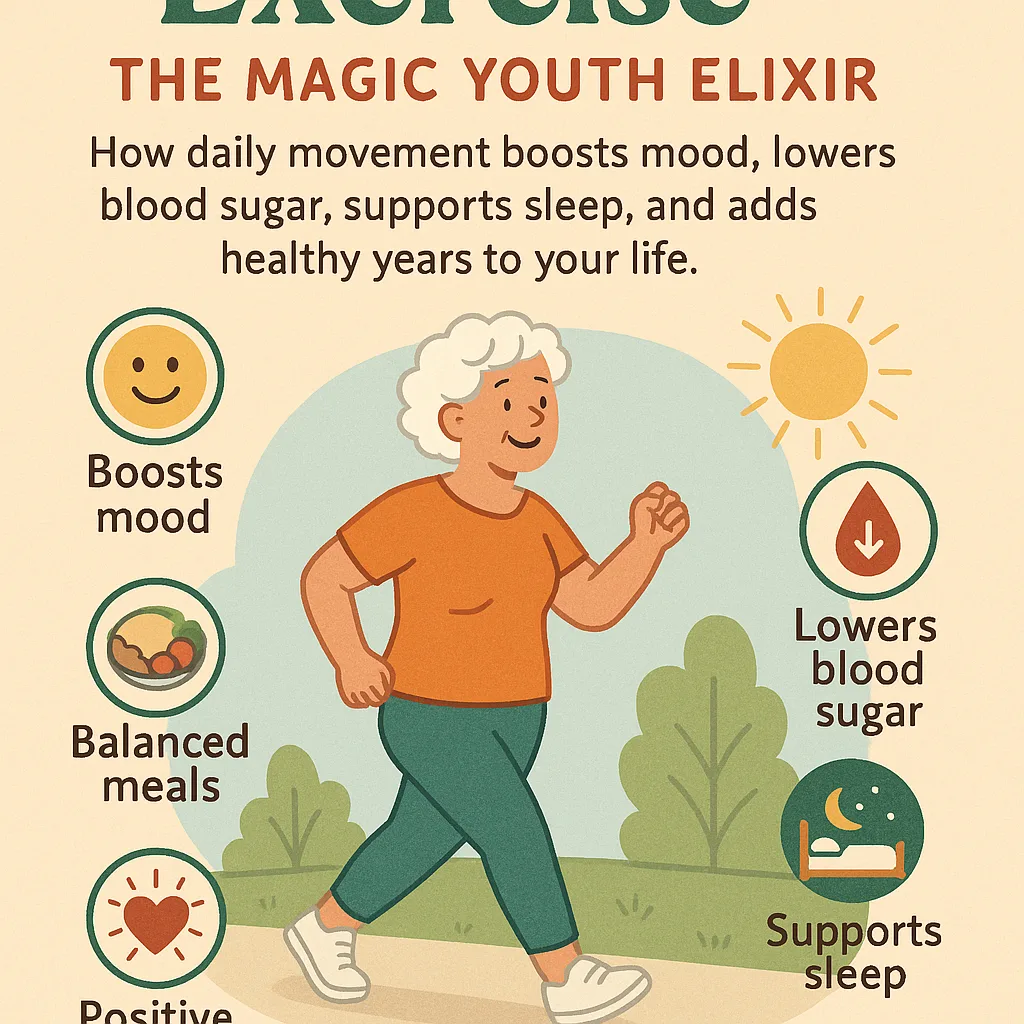Why “healthy” labels can mislead
Front‑of‑package terms like whole grain, fat‑free, and heart‑healthy often hide sugar density, refined starches, and additives that challenge glucose control. Here are five frequent offenders and simple swaps that support steadier numbers and better satiety.
1) Whole wheat and many packaged whole‑grains
Even when labeled whole grain, many commercial breads and crackers are milled finely, collapsing into glucose quickly. Two slices of sandwich bread can deliver as many carbs as a candy bar.
- Issue: Rapid digestion, post‑meal spikes, and rebound hunger.
- Swap: Leaf‑wrapped sandwiches, low‑carb tortillas, or a bun‑less approach. If bread is essential, bake ultra‑low‑carb loaves using almond or coconut flour and eggs for structure.
2) Milk products for the sake of “low fat”
Skim and low‑fat milks remove satiating fat but keep lactose, a sugar. A single cup can add ~12–13 g of carbohydrate, and flavored milks push this far higher.
- Issue: Unexpected carb load, limited satiety.
- Swap: Unsweetened almond milk or lactose‑free options with minimal carbs. Choose full‑fat plain Greek yogurt in small portions; it’s more filling, and pairing with protein slows glucose rise.
3) Soy products promoted as universal health foods
Soy can be part of some diets, but heavy reliance on processed soy foods (snack bars, shakes, textured isolates) is not ideal. Formulations vary, and some individuals experience thyroid or GI issues.
- Issue: Ultra‑processed soy foods often include added sugars and refined oils.
- Swap: If using soy, favor minimally processed forms like edamame or tofu, and watch sauces for sugar. Prioritize eggs, poultry, fish, and legumes within your carb budget.
4) Vegetable oils and margarine
Highly refined seed oils and margarines can skew omega‑6 intake and often accompany ultra‑processed foods. For many people with diabetes, a focus on monounsaturated and naturally occurring fats is more supportive.
- Issue: Inflammation concerns; processed spreads sometimes hide trans fats.
- Swap: Olive oil for dressings and low‑heat cooking; avocado oil for higher‑heat sautéing; real butter in modest amounts if tolerated.
5) “Fat‑free,” “low‑fat,” and “no‑fat” packaged foods
When fat is removed, manufacturers often add sugar, starches, or gums to restore texture. The end result can be less satiating and more glycemic.
- Issue: Higher sugar density, more snacking later.
- Swap: Choose foods close to their natural form: meats, fish, eggs, vegetables, nuts, olives, and berries. Build meals around protein and fiber.
A one‑week reset
- Build each plate with protein, non‑starchy vegetables, and a modest fat source.
- Keep total carbs consistent per meal; monitor with a meter or CGM.
- Plan snacks you actually like: cheese and cucumber slices, a handful of nuts, or a boiled egg.
- Drink water, tea, or coffee without sugar; add cinnamon or vanilla for flavor.
Reading labels like a pro
- Scan serving size and servings per container.
- Check total carbohydrates and the added sugars line.
- Look for short ingredient lists and recognizable foods.
- Be wary of halo words: natural, artisanal, ancient grains.
The big picture
There’s no single perfect diet for every person with diabetes, but replacing these five “healthy” traps with whole, lower‑glycemic choices dramatically improves control for many. Start small, measure, and iterate.





